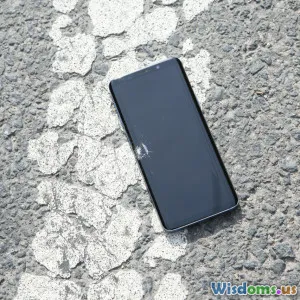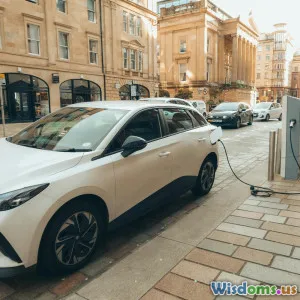
Comparing Top Ride Sharing Apps Which Offers the Best Deal
9 min read Explore and compare top ride-sharing apps to discover which offers the best deal for your daily commute and travel. (0 Reviews)
Comparing Top Ride Sharing Apps: Which Offers the Best Deal?
Transportation technology has transformed how we navigate cities, and ride-sharing apps are at the forefront of this revolution. Whether you daily commute, occasionally travel, or need a last-mile solution, knowing which app delivers the best deal is crucial. With many options flooding the market, riders often ask: which app gives the most value?
In this article, we dissect the leading ride-sharing platforms to uncover pricing structures, discounts, usability, and overall value. We’ll explore notable examples, user feedback, and real-world costs so you can make informed, wallet-friendly choices.
The Ride-Sharing Landscape: Major Players and Market Trends
Ride-sharing apps have surged in popularity worldwide. Notable leaders include Uber, Lyft, and regional players like Didi Chuxing (China) and Bolt (Europe). For this comparison, we'll focus on U.S. leaders Uber and Lyft, along with emerging alternatives such as Via and Wingz.
Why Compare Ride-Sharing Apps?
Though most platforms offer comparable services—on-demand rides, multiple vehicle types, cashless payments—the devil is in the details. Variations in pricing algorithms, surge pricing triggers, subscription models, and loyalty programs create distinct user experiences.
A recent survey by Statista showed over 60% of urban riders switch between two or more ride-sharing apps, chasing better deals or service quality. For commuters spending upwards of $15 weekly on rides, choosing the optimal app represents meaningful savings annually.
Pricing Models: Base Fares, Surge, and Subscription Savings
Understanding how each app calculates fares is key.
Uber
Uber’s pricing includes a base fare, per-minute charge, and per-mile fee. During peak hours or unexpected demand, surge pricing can amplify fares by 1.5x to 3x. Uber also offers Uber Pass, a subscription that provides 15% off rides plus $0 delivery fees for $24.99/month—a tempting option for frequent users.
Lyft
Similar to Uber, Lyft’s fare structure combines a base rate plus mileage and time components. Lyft Pink subscription offers 15% off rides and priority airport pickups for $19.99/month, generally cheaper than Uber Pass.
Via
Via focuses on shared rides with fixed fares, promising lower costs during busy times by efficiently pooling riders. Prices tend to be 30-50% less than Uber/Lyft for short-to-medium distances but travel time might increase due to detours for pickups.
Wingz
Wingz offers pre-scheduled rides with flat rates, ideal for airport trips where avoiding surge pricing is a priority. Though somewhat niche, users cite predictable pricing and helpful drivers.
User Experience: Convenience Meets Cost
While price is critical, factors like app usability, wait times, and driver quality also impact overall value.
-
Uber: Boasts the largest driver network, meaning shorter wait times (average 4.5 mins in urban centers). The app’s features include in-ride safety tools and an intuitive interface.
-
Lyft: Generally praised for friendlier drivers and occasional promotions that deepen savings. Wait times hover around 5 minutes.
-
Via: Fits price-sensitive, more flexible riders but has a slightly more complicated interface due to ride-sharing logistics.
-
Wingz: Best for planned trips rather than spontaneous rides; offers peace of mind with a fixed cost model.
Real-World Price Comparison: A Typical 5-Mile Ride in New York City
To quantify, we analyzed live ride estimates during off-peak and peak hours for a 5-mile trip:
| App | Off-Peak Cost | Peak Cost (Surge) | Subscription Discount |
|---|---|---|---|
| Uber | $18 | $27-$35 | 15% with Uber Pass |
| Lyft | $17 | $25-$32 | 15% with Lyft Pink |
| Via | $10 | Fixed near $10 | N/A |
| Wingz | $20 | Fixed $20 | N/A |
As shown, Via’s shared rides are roughly half the price of Uber and Lyft during peak times but expect routes to take 10–20% longer. Subscriptions can reduce per-ride prices but make sense only for frequent riders.
Safety and Insurance: An Essential Consideration
Affordability loses meaning without trust in safety standards. Uber and Lyft heavily vet drivers, background checks, and carry commercial insurance. Via adheres to similar requirements.
According to a 2023 report from the National Safety Council, Uber and Lyft rides have seen enhanced safety protocols introducing in-app emergency buttons and real-time ride tracking.
Passenger peace of mind, bolstered by transparent safety features, contributes intangible value when weighing what constitutes the "best deal."
Eco-Friendly Options: Saving Green and the Planet
Many apps promote greener rides with electric vehicle (EV) options. Uber Green and Lyft’s EV mode let riders select low-emission cars, sometimes at a small premium but contributing to environmental goals.
If sustainability factors into your decision, these features offer another dimension of value beyond monetary savings.
Conclusion: Which Ride Sharing App Offers the Best Deal?
Determining the ‘best deal’ depends heavily on your priorities:
- Cost-conscious travelers: Via’s lower fares for shared rides provide unbeatable value if you’re flexible on timing.
- Frequent riders: Uber Pass and Lyft Pink can yield consistent savings, especially in surge-prone areas.
- Airport and pre-planned trips: Wingz’s fixed pricing removes surprises.
Ultimately, combining occasional use of multiple apps maximizes both cost efficiency and convenience.
By understanding each platform’s pricing, service footprint, and perks, you can tailor your ride-sharing habits to match your budget, schedule, and values—making your urban travels smarter, safer, and more affordable.
Takeaway: If saving money is your primary goal, experimenting with shared ride options like Via and subscribing to discount plans on your preferred app unlock the best deals. Meanwhile, balance affordability with safety and service quality for the ideal ride-sharing experience.
Rate the Post
User Reviews
Popular Posts





















